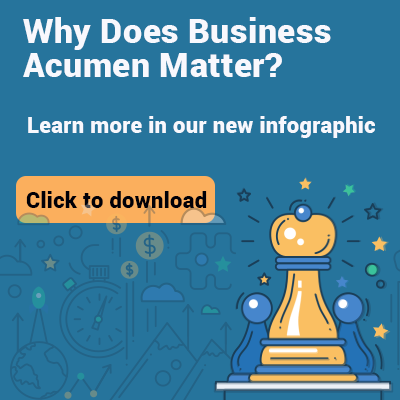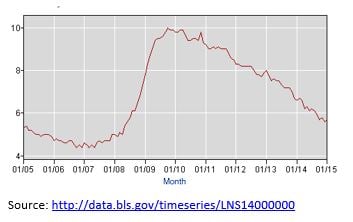
It is almost impossible these days to listen to a significant business presentation such as an earnings call, an investor day, or an internal town hall without hearing business leaders use the terms business headwinds and / or tailwinds. There are many other aviation terms used as business jargon these days including “runway,” “lift,” “Mach speed,” “turbulence,” and of course “crash landing.”
For example, the following phrases are very common in everyday business conversations:
- “We’ve got to give that business unit a little more runway…” which means the business needs more time to evolve and develop.
- “We aren’t seeing the lift in that new product that we forecasted…” which means we aren’t selling as much or capturing as much market share as we had hoped.
- “We need to move at Mach speed to get this product out of the door to customer…” which of course means we need to move a lot faster to launch the product.
I am particularly fond of using the aviation analogy in describing our business model and value proposition to our clients: “Like a pilot going through a flight simulator to learn how to fly a plane, we develop business simulations for business people to learn how to fly a business.”
All of this constant aviation talk got me thinking about what are the business headwinds and tailwinds impacting business in 2015 and beyond, so we did a little research to come up with a few to share and discuss.
Defining Business Headwinds and Tailwinds
Before getting into the discussion of the topics, I need to take a moment to define the terms for some of our readers who may not be familiar with modern business jargon. (We have quite a number of scientists, chemists, and engineers who participate in our business acumen programs who may not have exposure to these terms every day).
 Tailwinds
Tailwinds
From an aviation perspective, a tailwind is wind pushing the tail of the aircraft and helping it go faster. In the United States, the Jetstream always goes west to east and planes flying from the west coast to the east coast go faster and use less fuel because of the tailwinds. That’s why it takes 6 hours to get from New York to San Francisco but only 5 to get from San Francisco to New York. In business, the term “tailwinds” refers to or describes a situation or condition that will move growth, revenues, or profits higher. For example, lower gasoline prices will reduce the forecasted transportation costs of a manufacturing business and therefore increase profitability.
Headwinds
From an aviation perspective, a headwind is wind pushing against the front of the aircraft which slows it down. Since the Jetstream goes west to east, planes flying west are always dealing with headwinds; the only question based on the meteorological conditions is how strong are the headwinds? In business, the term “headwinds” are the opposite of the tailwinds. Headwinds in business are situations or conditions that make growth harder. Just this week, for example, Coca-Cola announced that they are forecasting their earnings to plunge by 55%. One of the reasons is the “tailwind” of a healthier consumer base looking at lifestyle and fitness more than ever.
As our Advantexe team travels the globe working with clients in the areas of business acumen, business leadership, and strategic business selling, we are exposed to many different macro and micro economic conditions for integration into our business simulations and client engagements.
The rest of this blog will share some of our insights and ideas on the tailwinds and headwinds facing our clients over the next six months.
US Economy
As we review all of the data and talk with our clients about forecasts, orders, inventories, and shipments, it is clear to us that the recovery from the recession is evolving to a more complex stage and for business leaders this creates some perplexing challenges.
There are still some very strong tailwinds that are supporting growth. As a student of macroeconomics, all of the data shows that we still have a very weak recovery relative to previous recessions. By this point in the recovery, we should be much stronger which means there are slow and steady tailwinds that are going to continue to gently push recovery over the next six months.
The two main drags on the current US economy are housing and automobiles. It is safe to assume that the tailwinds of the recovery are going to push these two segments as there is evidence of strong pent-up demand for autos (based on the age of the current autos on the roads today), and there may be even more pent-up demand for housing based on supply and demand and increased disposable income in the new workers entering the workforce. In our opinion, there is a lot of growth that is going to happen in these two GDP drivers this year, which is good news for many core manufacturers and service providers.
Another key driver of the GDP is consumer spending and that has been okay, but not great. The unemployment rate is still relatively high as compared to previous recoveries, and I think that is what
is having the most impact onthe recovery and consumer spending. As of January 2015, the unemployment rate is 5.7% which is down from 6.6% the previous January. It needs to come down more in order for the recovery to be in full effect, and when it does, that will be a significant tailwind to all businesses in the US. With the combination of lower gasoline prices and more disposable income going into the ecosystem, those will be significant tailwinds for organizations producing and selling products and services to consumers.
While it is clear that the economy is consumer driven, manufacturing and industry – B2B – are also critical parts of the business ecosystem and have tailwinds and headwinds. One of the biggest “a-ha moments” participants get from one of our business acumen simulations is a deeper understanding and appreciation of inventory management. As we look at the real-world data, inventories are down, which means there will be no cut backs in production or orders, which is another tailwind. In the meantime, however, I can argue that one of the reasons inventories are non-existent is because of very slow loan growth. If there is no capital being invested, manufacturers are not going to tie their cash up in inventories. Based on how we build our economic models, I would say that the US economy has a lot of runway and room for growth once there is an infusion of fresh capital.
Regarding financing and capital, in my opinion, they are the strongest headwinds the economy faces. As interest rates climb – and they will climb during 2015 – there will be pressure as a result of a stronger economy. The real test will be when the demand for money is stronger than the economic recovery; if it is too strong, that will be a huge headwind for the rest of the year.
Another headwind is the strength of the US dollar because it is going to limit the export markets, and that is going impact just about every company with the exception of luxury goods and strong brands such as Apple.
I spent some time in Europe over the winter break and I am not sure US business leaders are aware of the headwinds Europe is actually facing, which will impact buying and import power even further. There are significant labor issues, a lack of coordination between countries, and major geopolitical issues being played out in the streets. In addition, the continued depreciation of the Euro will drive some different behaviors. In fact, I read last week that the Central Bank of Europe is doing everything possible through programs and other manipulations to ease the depreciation. Continued currency depreciation will increase European exports, which may ultimately fuel some growth and turn the headwind into a tailwind. Add to that lower oil prices and Europe may be in a different place by the end of the year.
In summary, understanding the flow of the headwinds and tailwinds is an important part of business acumen. I tried to share some macroeconomic perspectives about the winds of business as they relate with the work we do in training, building simulations, and helping our clients achieve their business results. Please feel free to reach out if you have any questions.




